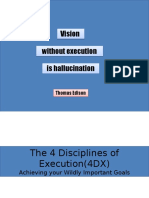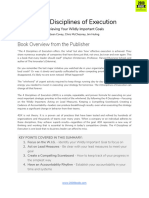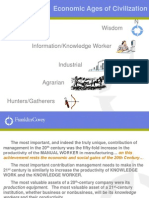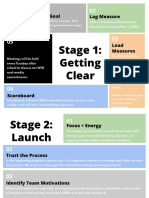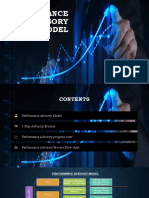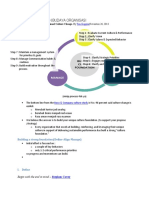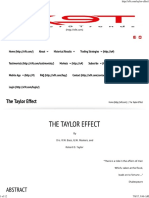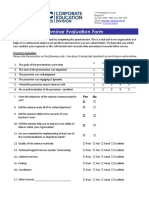0% found this document useful (0 votes)
45 views13 pagesThe 4 Disciplines of Execution - Summary
The 4 Disciplines of Execution by Chris McChesney outlines a framework for achieving critical organizational goals by focusing on one or two 'wildly important goals' (WIGs), utilizing lead measures, and maintaining accountability through regular check-ins. The methodology emphasizes the importance of a compelling scoreboard to track progress and the need to manage daily distractions, referred to as the 'whirlwind'. Overall, the book provides practical strategies for enhancing performance and engagement both in business and personal contexts.
Uploaded by
maboho8486Copyright
© © All Rights Reserved
We take content rights seriously. If you suspect this is your content, claim it here.
Available Formats
Download as PDF, TXT or read online on Scribd
0% found this document useful (0 votes)
45 views13 pagesThe 4 Disciplines of Execution - Summary
The 4 Disciplines of Execution by Chris McChesney outlines a framework for achieving critical organizational goals by focusing on one or two 'wildly important goals' (WIGs), utilizing lead measures, and maintaining accountability through regular check-ins. The methodology emphasizes the importance of a compelling scoreboard to track progress and the need to manage daily distractions, referred to as the 'whirlwind'. Overall, the book provides practical strategies for enhancing performance and engagement both in business and personal contexts.
Uploaded by
maboho8486Copyright
© © All Rights Reserved
We take content rights seriously. If you suspect this is your content, claim it here.
Available Formats
Download as PDF, TXT or read online on Scribd
/ 13

